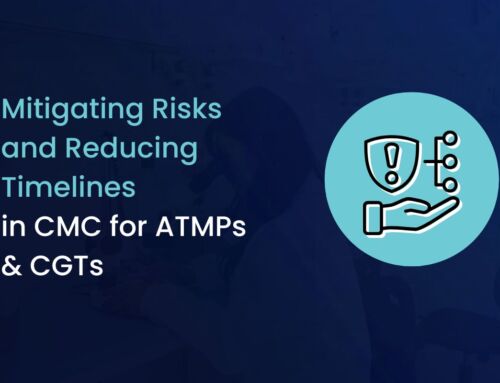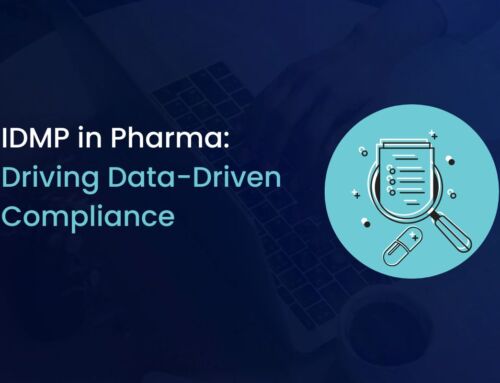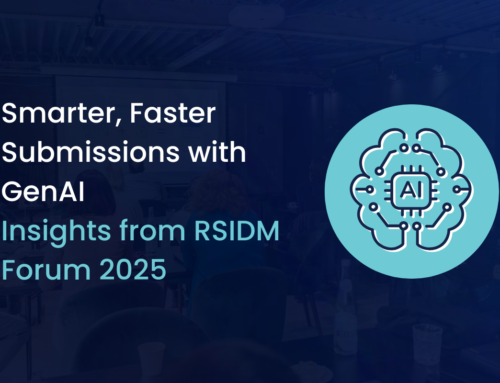
Best Practices in Regulatory Publishing and Submissions
As Regulatory requirements change, mastering the nuances of regulatory publishing and submissions is crucial for success as well as balancing the workload with development. At Celegence, we understand these demands and the need for continuous improvement. We recently conducted a focus group with experts in the pharmaceutical industry to explore best practices specifically related to publishing and submissions (P&S). This collaborative effort has revealed valuable insights and strategies that can help streamline processes and enhance compliance.
In this blog, we’ll share key learnings from this focus group, offering actionable takeaways to increase the efficiency and effectiveness of your regulatory approach with P&S.
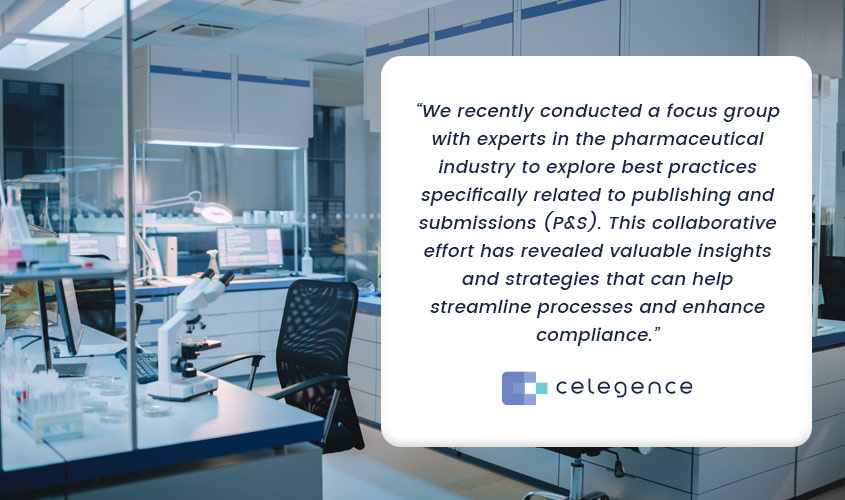
Common Threads Globally and By Company Size
There are of course, differences in regional requirements between health authorities and notifying bodies. Company size also determines different approaches to publishing and submissions. Based on our experience, we see common threads that bring together the best practices.
Here is a summary of those learnings and to help you build a solid plan:
- Skillset
It’s important to have a well-experienced team with in-depth knowledge of eCTD document requirements. If your team doesn’t have the necessary skills, partner to acquire strategic and/or operational support.
- Quality
Support the content of the document to ensure it is error-free. Use trend analysis of the internal comments/issues to understand the root cause and implement CAPA.
- Knowledge base
Excellent knowledge of the PDF tools [TRS Toolbox, and SmartDesk] to leverage the functionality of the tool and complete the request in a short turnaround time is important. In addition, have a strong understanding of the technicalities of industry-leading eCTD tools [eCTD XPRESS, docuBridge, eCTD manager] and strong knowledge of regional administrative information, and document life cycle operation.
- Careful tracking and project management
Strong knowledge is a good start, but you’ll also need a track record of “one day before” and first-time-right delivery. Plan to have in-depth tracking of data for every request. The most successful companies have an agile way of working to meet critical and short timelines.
- Global efficiency approach
Use the time zones and technology to your advantage through a strategic “follow the sun” approach to support the services. Always remember to recognize country-specific holidays, keeping in mind the human and cultural side.
- Communication and collaboration
The simple practice of weekly/bi-weekly meetings with the customer to ensure all queries are addressed goes a long way. You will want to assist customers if there is a knowledge gap or questions during the P&S process.
Comprehensive & Collaborative Approach for Regulatory Publishing and Submissions
| Theme | Best Practice Recommendation |
| Communication | Clear, effective communication and collaboration with clients, stakeholders, and internal teams. |
| Timeline | Understand and document client objectives and specific project milestones. |
| Setting expectations | Meet client needs and exceed expectations. |
| Cross-functional relationships | Establish active working relationships with teams in Medical Affairs, Regulatory Affairs, and Pharmacovigilance. |
| Perspectives and inputs | Incorporate diverse perspectives and expertise focused on outcomes. |
Consistency, Compliance & Quality Assurance
One of the most important aspects of effective publishing and submissions is the consistency of the information. Together, consistency and quality form the cornerstones of effective compliance. To achieve this, our focus group recommends the following:
- Thorough reviews and validation of content; block out time for SMEs to review and validate. Allow plenty of time taking into account schedules and document volume.
- Follow Health Authority (HA)/Regulatory guidelines and industry best practices with accuracy, clarity, and adherence.
- Stay current with evolving guidelines through reading, alerts, conferences or collaboration with others in the industry.
- Establish quality control measures for the highest standards of compliance; conduct regular audits and quality checks.
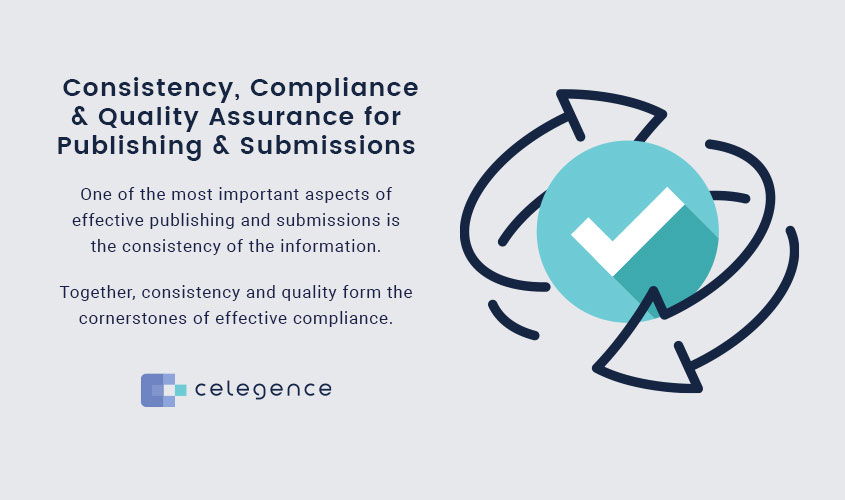
Robust Systems, Processes and Document Organization
Another important aspect we discussed was the importance of building robust systems and processes for accuracy and integrity. There is significant focus on technology, such as automation and built-for-purpose platforms, but the processes can usually make or break efficiency and accuracy.
P&S is of course very heavy on medical writing. Efficient medical writing service management can set apart a company to be a leader with greater precision and quality content for impact.
On the technical side, document control systems and version control mechanisms are table stakes for a credible outcome. This includes proper tracking, review, and quality checks while adhering to regulatory timelines.
Efficient document gathering and organization are equally important. For example, Celegence has a strong systematic approach that captures and organizes relevant information within the documents. One example of this is our experience and expertise in Lean Authoring to help streamline the submission process through better structuring of data for reuse and efficiency from the start.
Resources and Time
The focus group also outlined the need for expertise and resources that add immediate value and help the pharmaceutical company save time. Here are some examples of how we approach that at Celegence:
- Global regulatory experience: we understand the complexities of international regulatory frameworks, including the ICH, EMA, FDA and other regional agencies.
- Medical writers on staff: our skilled medical writers have diverse expertise to accelerate document creation and maintenance, easing clients’ workload. The team works alongside technology and AI-powered solutions for augmented support.
- Pharmaceutical industry knowledge: this collaboration allows quick turnaround while maintaining extensive knowledge in drug development, multiple therapeutic areas, regulatory, clinical, and scientific content for different products.
- Efficiency-driven: our services are designed to streamline the document creation and update process, ensuring compliance, and saving time and resources.
Templates and Harmonized Process
One of the best ways to be consistent, achieve high quality and save time is through the use of standardized templates coupled with Lean Authoring implementation. Celegence recommends templates based on the GDP, ICH guidelines and client’s requirements. Here are a few use cases for templates that we provide:
- Health Authority Response document template
- Standard Operating procedures (SOPs)
- Work Instruction and Handbooks
By using templates, you’re not spending time on reinventing a format. It also ensures consistency across the organization.
Overcoming Publishing & Submission Challenges
Publishing and submissions require a fast pace and meeting tight deadlines is a critical challenge. From our experience, we share a few strategies to help you navigate these pressures effectively:
- Plan for Volume: publishing and submission timelines are non-negotiable. The sheer volume of tasks that need to be accomplished within a short period can be overwhelming. Effective planning is essential, and this includes coordinating with all stakeholders involved.
- Add flexibility with a Center of Excellence (CoE) model: to handle peak times and last-minute demands, consider adopting a Center of Excellence model. This approach allows you to agree on a minimum resource level and then flex resources to handle peaks. Typically, planning for a 10-20% increase in workload during peak times can make a significant difference. Partnering with an experienced market leader, like Celegence, can help alleviate these pressures by adding extra capacity at critical points.
- Build in Experience: leveraging experienced resources, who can quickly respond to your needs is essential. Their expertise can make a critical difference in managing the flow of work, ensuring that critical deadlines are met without compromising quality. Outsourcing and partnering with an organization such as Celegence is about more than bandwidth. Your organization needs a team that understands the nuances, such as regional differences, how to respond to changes, and can help you navigate with confidence.
By incorporating these strategies, you can overcome the challenges of publishing and submissions, ensuring timely and efficient outcomes.
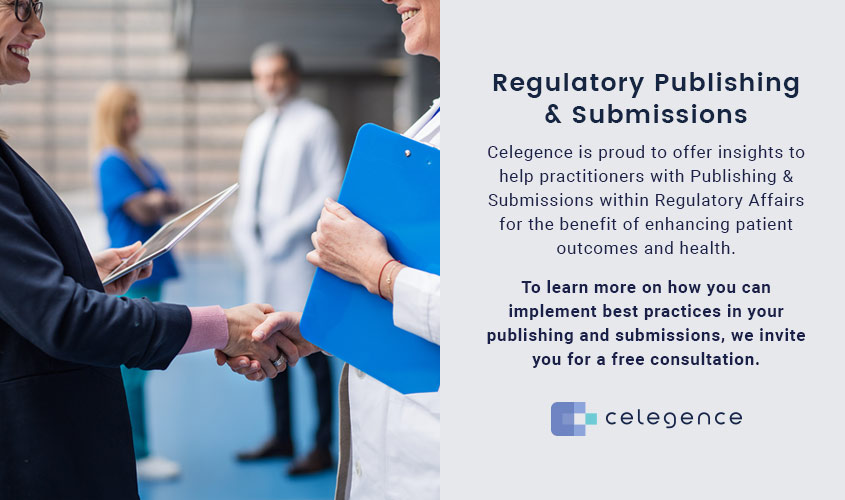
Publishing and Submissions Summary
It was powerful to hear the real examples and output from the focus group. This type of meaningful reflection helps move the industry forward through specific, actionable feedback. Celegence is proud to offer insights to help practitioners with Publishing & Submissions within Regulatory Affairs for the benefit of enhancing patient outcomes and health.
To learn more on how you can implement best practices in your publishing and submissions, we invite you for a free consultation.
Authors: Focus Group Publishing & Submission
- Mohana CG, Senior Manager – Publishing & Submission
- Dhana Kumar, Senior Manager – Publishing & Submission
- Maikel Bouman, Director of Regulatory Operations & Publishing – DDM
- Mahesh Nayak, Associate Manager – Publishing & Submission
